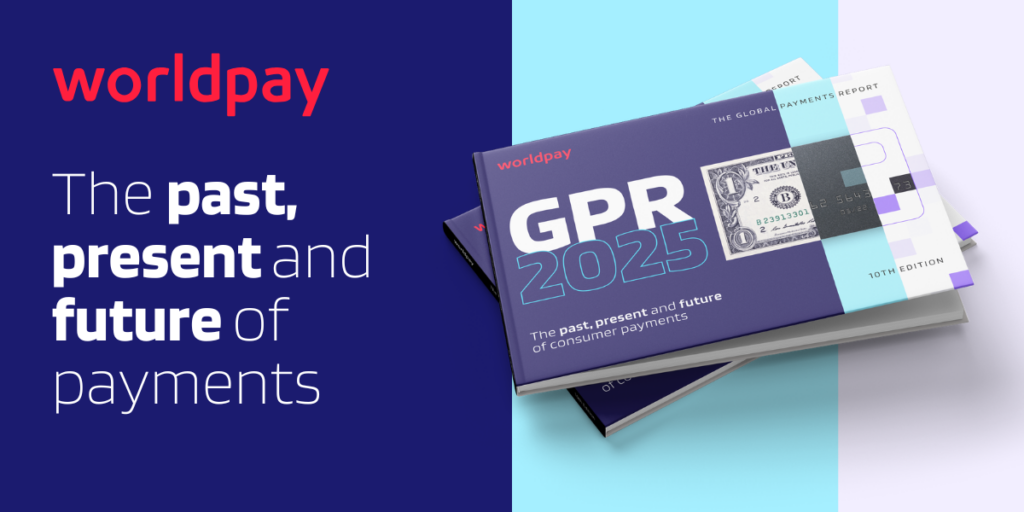
A decade ago, cash and cards ruled payments. Today, digital payment methods are transforming how consumers pay. Staying abreast of this evolution can help merchants meet mounting customer expectations, drive growth and stand apart from competitors.
To help merchants keep up with the unprecedented pace of change, Worldpay has launched the ‘Global Payments Report 2025‘, a comprehensive guide to the trends defining and shaping the industry.
“Consumer payment preferences have changed dramatically since we launched the first edition of the Worldpay Global Payments Report in 2015,” says Adam Coyle, chief strategy officer at Worldpay. “A confluence of factors—advancements in smartphone technology, the exponential growth of fintech and supportive regulatory frameworks, combined with changing consumer expectations, have fundamentally transformed how we make payments.”
In addition to ten years’ worth of reports to draw from and analyse, Worldpay surveyed 67,000 consumers across 40 markets to understand the past, present, and future of payments. This revealed how consumer payment preferences have changed and forecasted what’s next.
As the rate of change continues to accelerate, there will be further growth and transformation in digital payments, both in e-commerce and POS settings. Whilst the global e-commerce market has experienced some post-pandemic slowdown, it’s forecast to grow at double the rate of POS to 2030 (8% compound annual growth rate compared to 4%), inevitably powering further digital expansion.
By 2030, Worldpay estimates that 79% of e-commerce transaction value will be via digital payments.
At the heart of all this payment change are the customers whose expectations are evolving alongside new technologies. With more choice, flexibility, and convenience available to consumers everywhere, merchants are now operating in an environment where high expectations of user experience and rapid innovations can make it hard to know what to prioritize.
‘The Worldpay Global Payments Report‘ serves as a guide to what’s “now” and “next” in payments, revealing a complex global picture with market-level nuances, complexities and broader trends relevant to businesses both big and small, global and local.
Download your copy today of the past, present, and future payments.
Worldpay is an industry-leading payments technology and solutions company with unique capabilities to power omni-commerce worldwide. Our processing solutions allow businesses of all sizes to take, make, and manage payments in person and online from anywhere in the world.
The Payments Association
St Clement’s House
27 Clements Lane
London EC4N 7AE
© Copyright 2024 The Payments Association. All Rights Reserved. The Payments Association is the trading name of Emerging Payments Ventures Limited.
Emerging Ventures Limited t/a The Payments Association; Registered in England and Wales, Company Number 06672728; VAT no. 938829859; Registered office address St. Clement’s House, 27 Clements Lane, London, England, EC4N 7AE.







Log in to access complimentary passes or discounts and access exclusive content as part of your membership. An auto-login link will be sent directly to your email.
We use an auto-login link to ensure optimum security for your members hub. Simply enter your professional work e-mail address into the input area and you’ll receive a link to directly access your account.
Instead of using passwords, we e-mail you a link to log in to the site. This allows us to automatically verify you and apply member benefits based on your e-mail domain name.
Please click the button below which relates to the issue you’re having.
Sometimes our e-mails end up in spam. Make sure to check your spam folder for e-mails from The Payments Association
Most modern e-mail clients now separate e-mails into different tabs. For example, Outlook has an “Other” tab, and Gmail has tabs for different types of e-mails, such as promotional.
For security reasons the link will expire after 60 minutes. Try submitting the login form again and wait a few seconds for the e-mail to arrive.
The link will only work one time – once it’s been clicked, the link won’t log you in again. Instead, you’ll need to go back to the login screen and generate a new link.
Make sure you’re clicking the link on the most recent e-mail that’s been sent to you. We recommend deleting the e-mail once you’ve clicked the link.
Some security systems will automatically click on links in e-mails to check for phishing, malware, viruses and other malicious threats. If these have been clicked, it won’t work when you try to click on the link.
For security reasons, e-mail address changes can only be complete by your Member Engagement Manager. Please contact the team directly for further help.